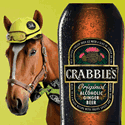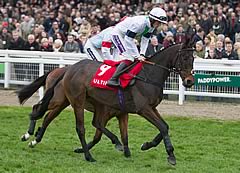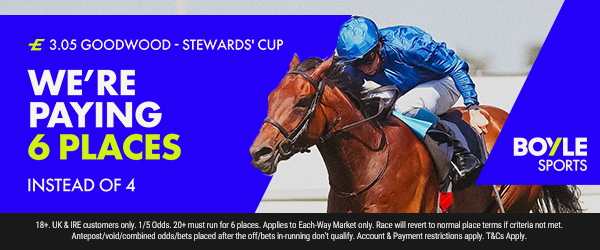The History of the Grand National - The World's Greatest Steeplechase |
 |
| May 2014 |
There are few sporting events more steeped in history than the Grand National. The headline race of the Aintree festival has been the highlight of the British racing calendar since 1839 and remains as vital today as it has ever been. Somehow the Grand National never fails to deliver the sort of drama and spectacle that captivates a huge TV audience every year.
With a little help from www.grandnationalstats.co.uk here’s a brief look back on the turbulent history of the world’s most famous horse race.
 |
Beginnings
The story of the Grand National began when Mr William Lynn, owner of Liverpool’s Waterloo Hotel, leased land from Lord Sefton and set up a course and grandstand.
After the foundation stone was laid by Lord Molyneux – complete with a bottle of sovereigns placed in the footings – on 7th February 1829, Aintree’s very first fixture took place five months later in front of a crowd of 40,000 – the 1.25 mile Croxteth Stakes, won by a horse called Mufti. The course was an immediate success, routinely drawing large and enthusiastic crowds to three annual meetings.
The birth of the National
It wasn’t until 1835 that the course installed hurdles and set the stage for what became the greatest jump race in the world. Four years later, on Tuesday February 26 1839 the Grand Liverpool Steeplechase was run for the first time. The debut race of what came to be known as the Grand National was run over a course that hardly resembled the Aintree we know today, but with a stone wall to clear, a stretch of ploughed land to cross and a couple of hurdles to navigate it certainly challenged riders and horses and gave the crowd a dramatic, eventful spectacle.
The National becomes a Handicap
The development of the Grand National into a handicap race came when Edward William Topham took over form William Lynn after the course founder was taken ill in the early 1840’s. Topham was a well-regarded handicapper and oversaw the National’s transition from the weight-for-age race it had been in its early years to the handicap we know today. Topham’s influential reign ultimately developed into outright ownership of the course when his family took on the Aintree lease in 1848. His family went on to acquire the course from Lord Sefton in 1949.
The influence of an actress - a new course and a handful of Grand Prix
Mrs Mirabel Topham had been an actress of some note before joining Topham’s board in 1934. Going on to take the role of course chairman she oversaw the most dramatic transformation in Aintree’s history with the construction of a brand new course in 1953. Named the Mildmay Course after Lord Mildmay (who had raced in the Grand National as an amateur jockey and kindled the Queen mother’s interest in racing), this new course was created with the intention of modernising Aintree with the addition of traditional fences and hurdles.
The ex-Gaiety Girl didn’t stop there. In 1954 work commenced on the construction of the motor racing circuit that still encircles the Grand National course today. It was another of Mirabelle Topham’s innovative ideas and went on to host five British Grand Prix and a European Grand Prix. For a while it was considered one of the premier racing tracks in the world and is notable for playing host to Stirling Moss’ first ever Grand Prix win in 1955.
Tough times
Aintree endured a lean spell throughout the 60s and early 70s. After a tough post-war era that saw the course hit by declining attendances there was little choice for the Topham family but to sell the course. An announcement signalling their intention to sell up to a property developer was made in 1965 and finally Bill Davies acquired Aintree in 1973.
Davies was not a racing fan and oversaw a dismal low point in the Grand National’s history when, upon tripling the admission price in 1975, attendance figures were the lowest they’d been in living memory.
Ladbrokes intervene
Having hit an all-time low with the 1975 Grand National, Aintree – and the famous old race – appeared to be in grave danger. Later that year, in a move that at the time some deemed as controversial and self-serving , Ladbrokes stepped in and signed a deal with Davies which gave them managerial control over the Grand National.
The bookmaker proved to be a trusty guardian and guided the race through a resurgent period. Nonetheless, despite an encouraging upturn in fortunes it was clear that Bill Davies intended to sell the course.
Saving Aintree
With concern for the future of Aintree now widespread, a fundraising appeal to rescue the race was launched on Grand National Day in 1982. The task, undertaken by the Jockey Club, of raising enough money to purchase the course proved challenging however and by the time of the 1983 a special extension had to be granted in order for the race to be run at all.
Happily, the following year Seagram Distillers became sponsors of the race after their chairman, Ivan Straker, read an impassioned newspaper article by Lord Oaksey describing seriousness of the threat to the race. This enabled the course to be purchased from Davies and run by the Jockey Club, establishing a new era of prosperity for the race that has since been sponsored by Martell and now Crabbies, whose investment allowed 2014’s race to be run for a record breaking £1 million purse.






